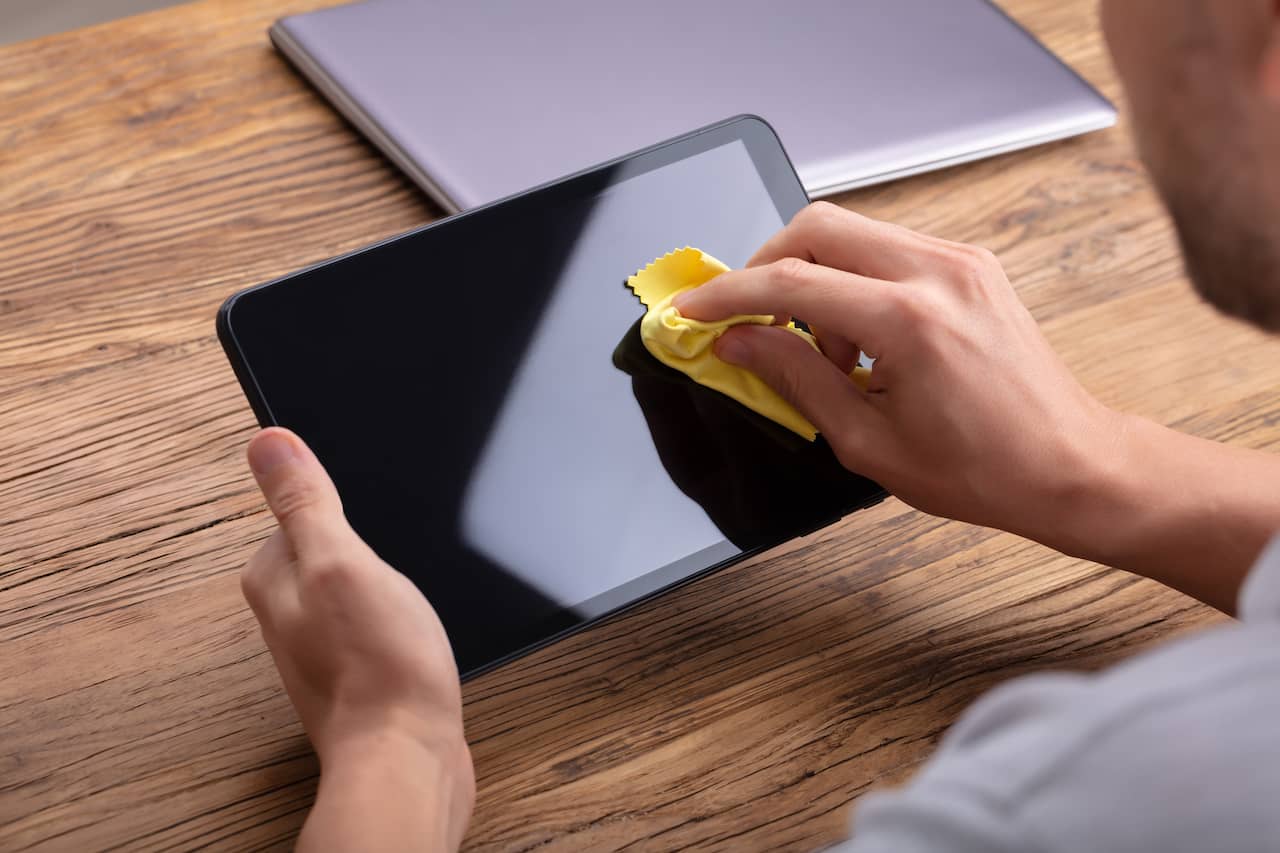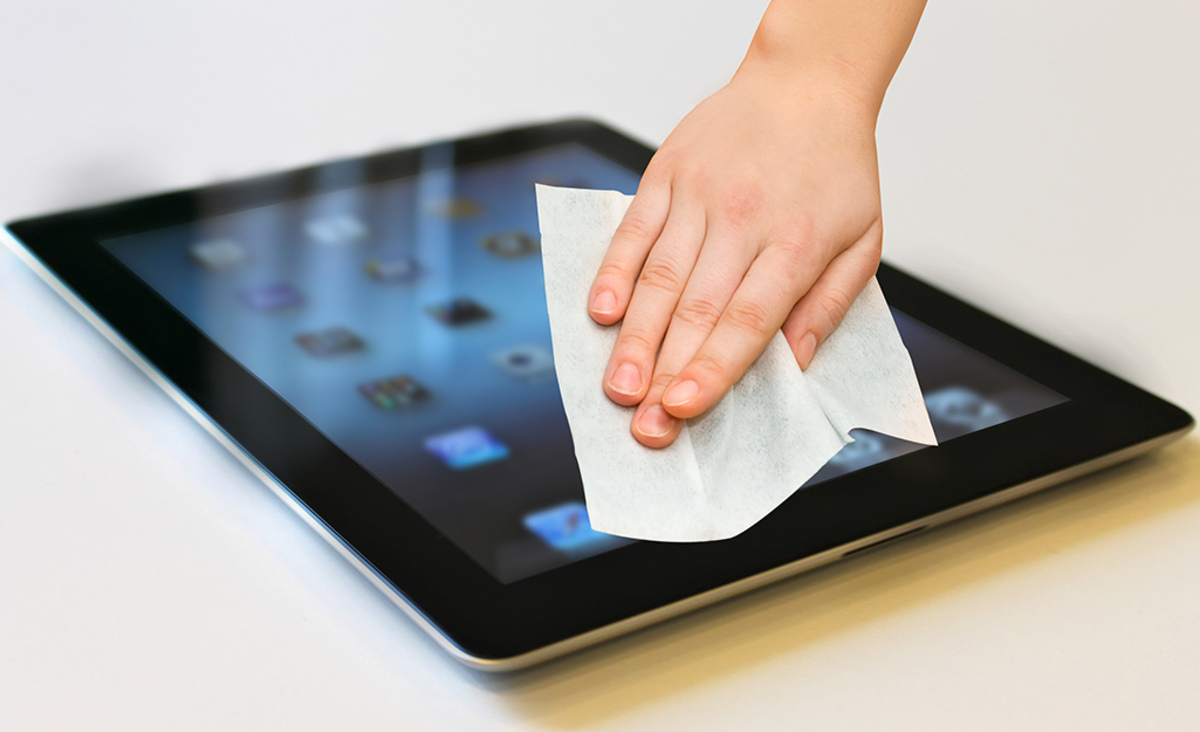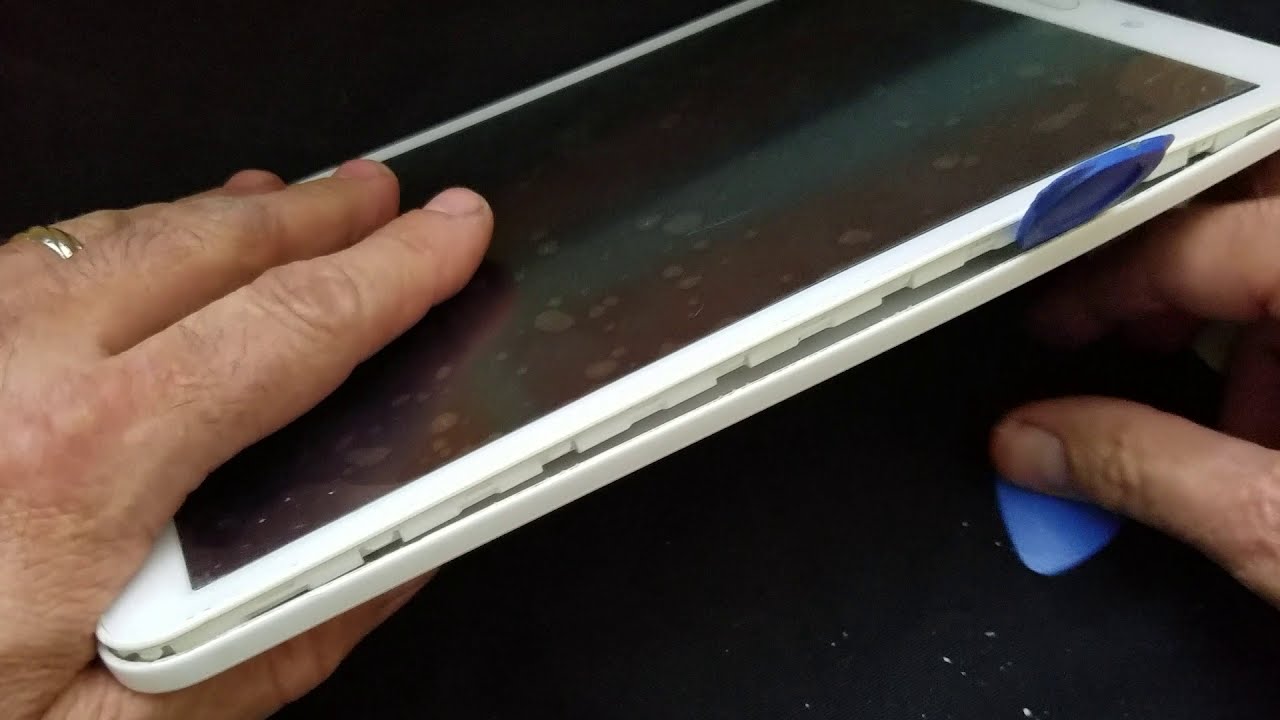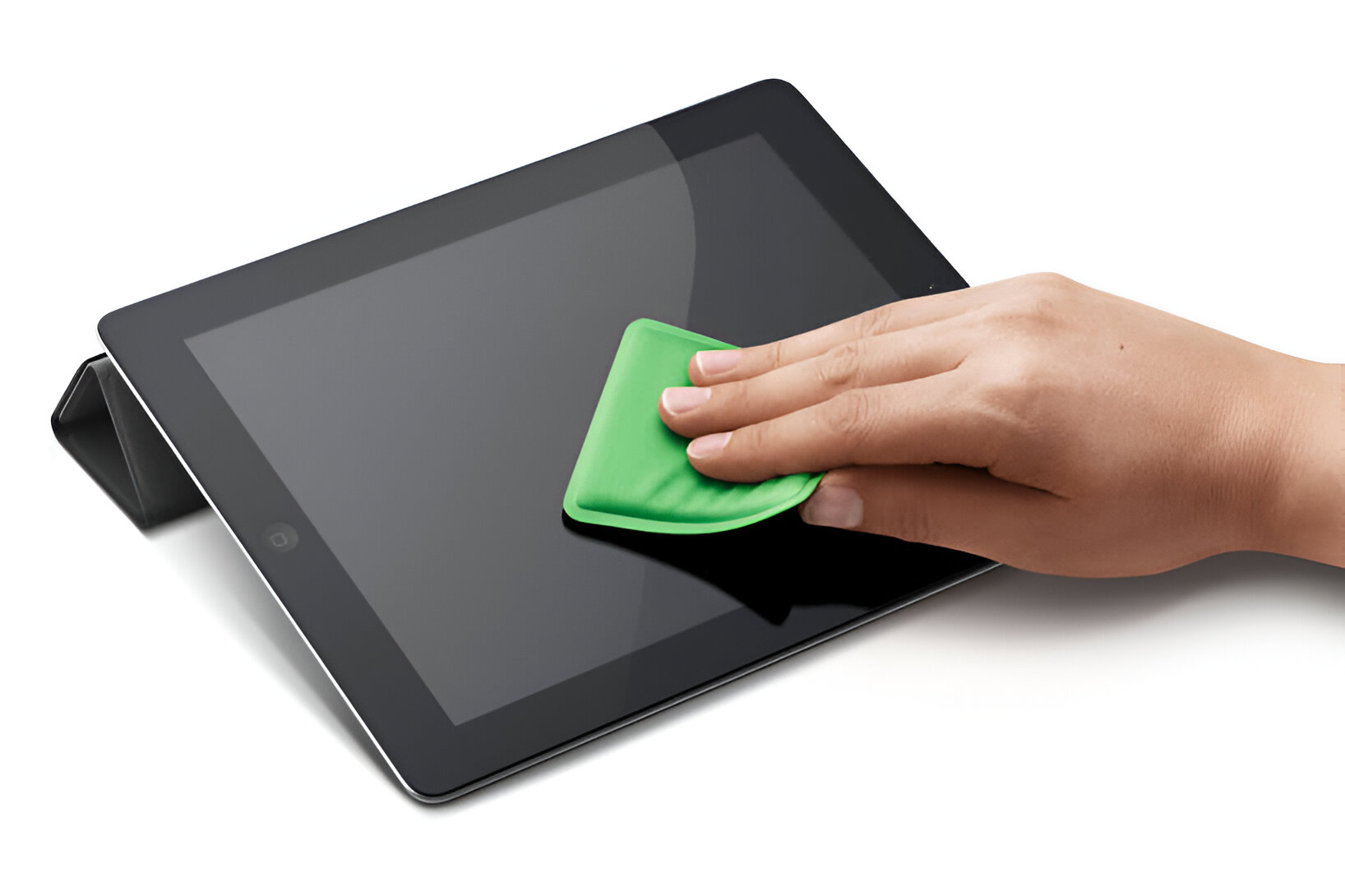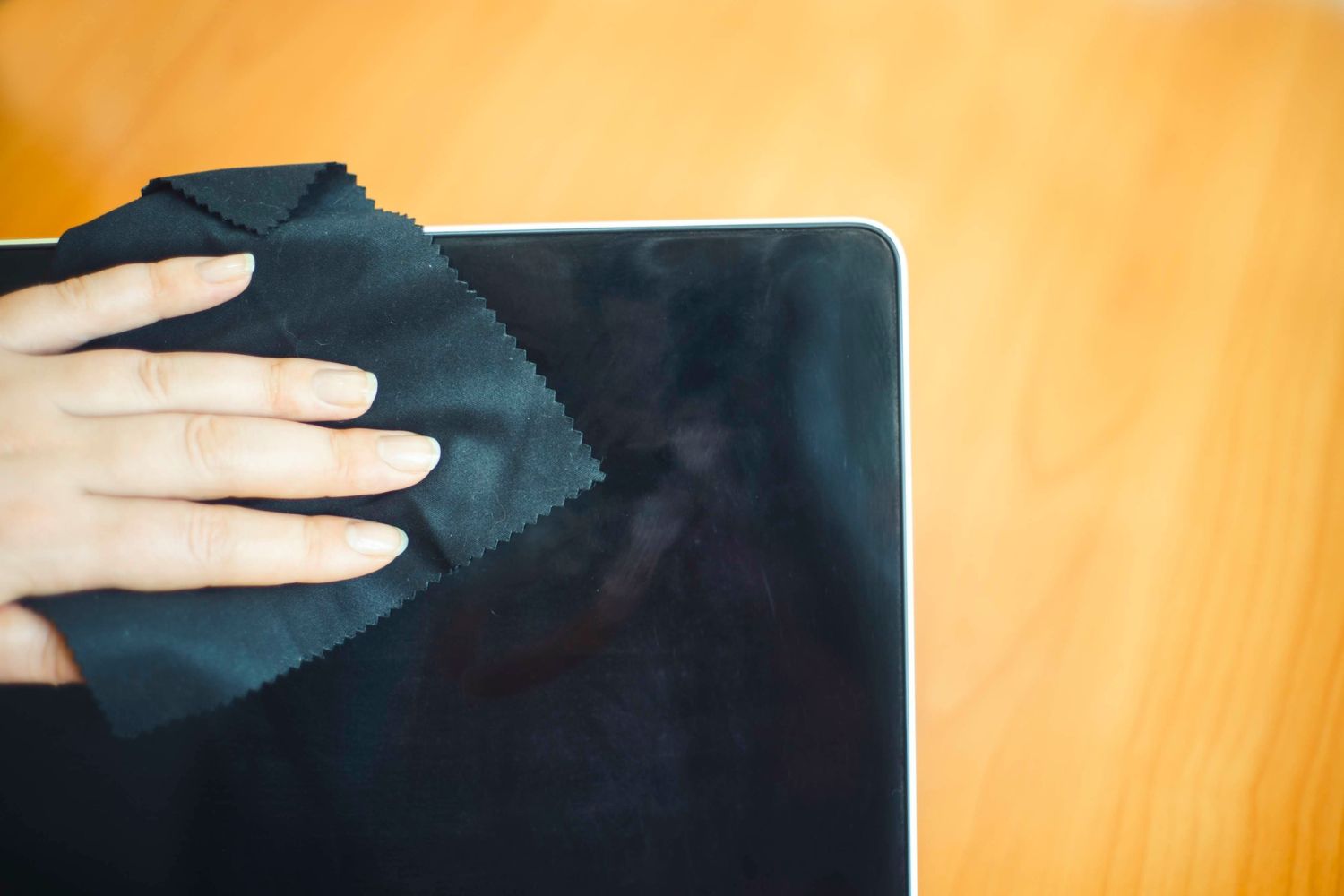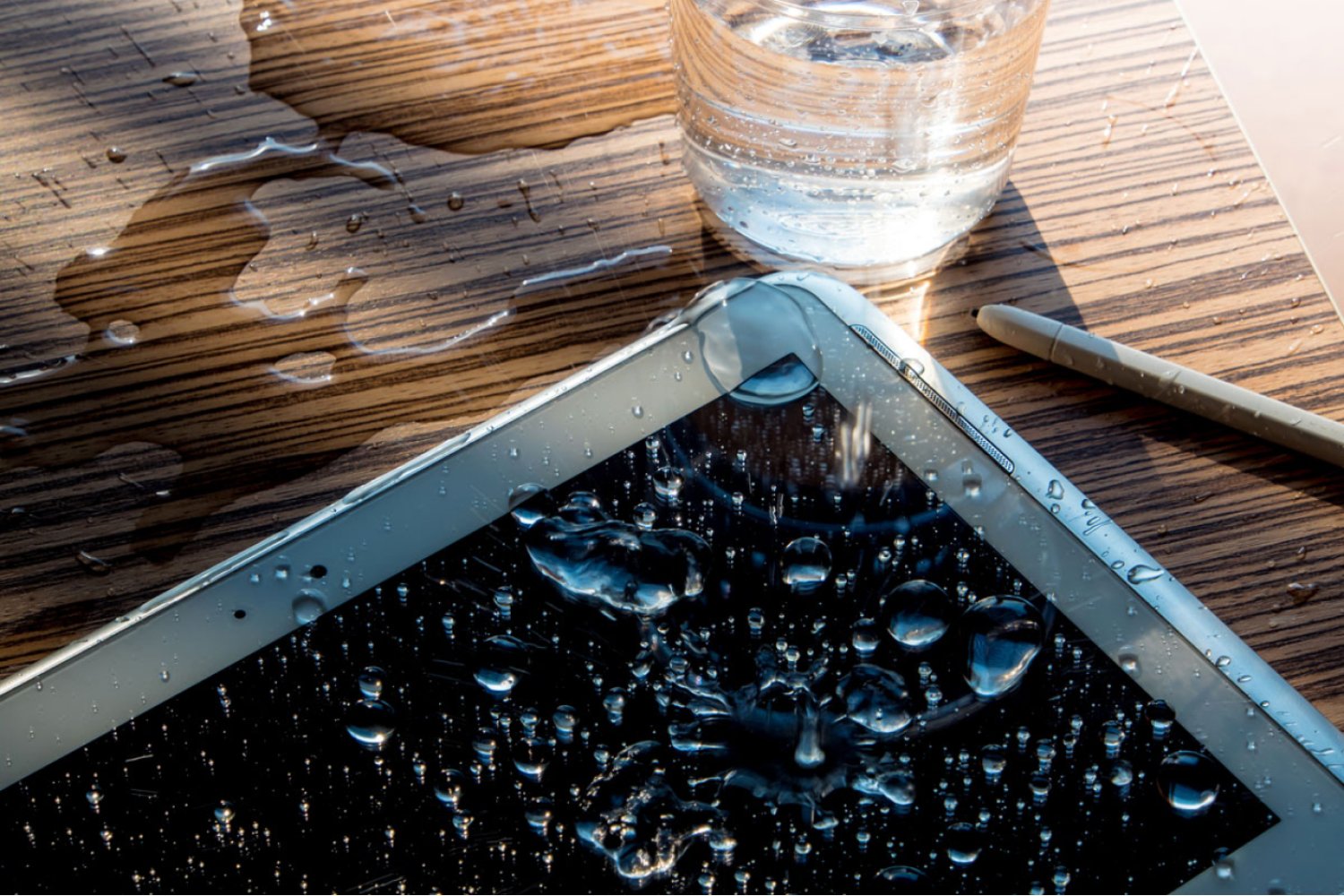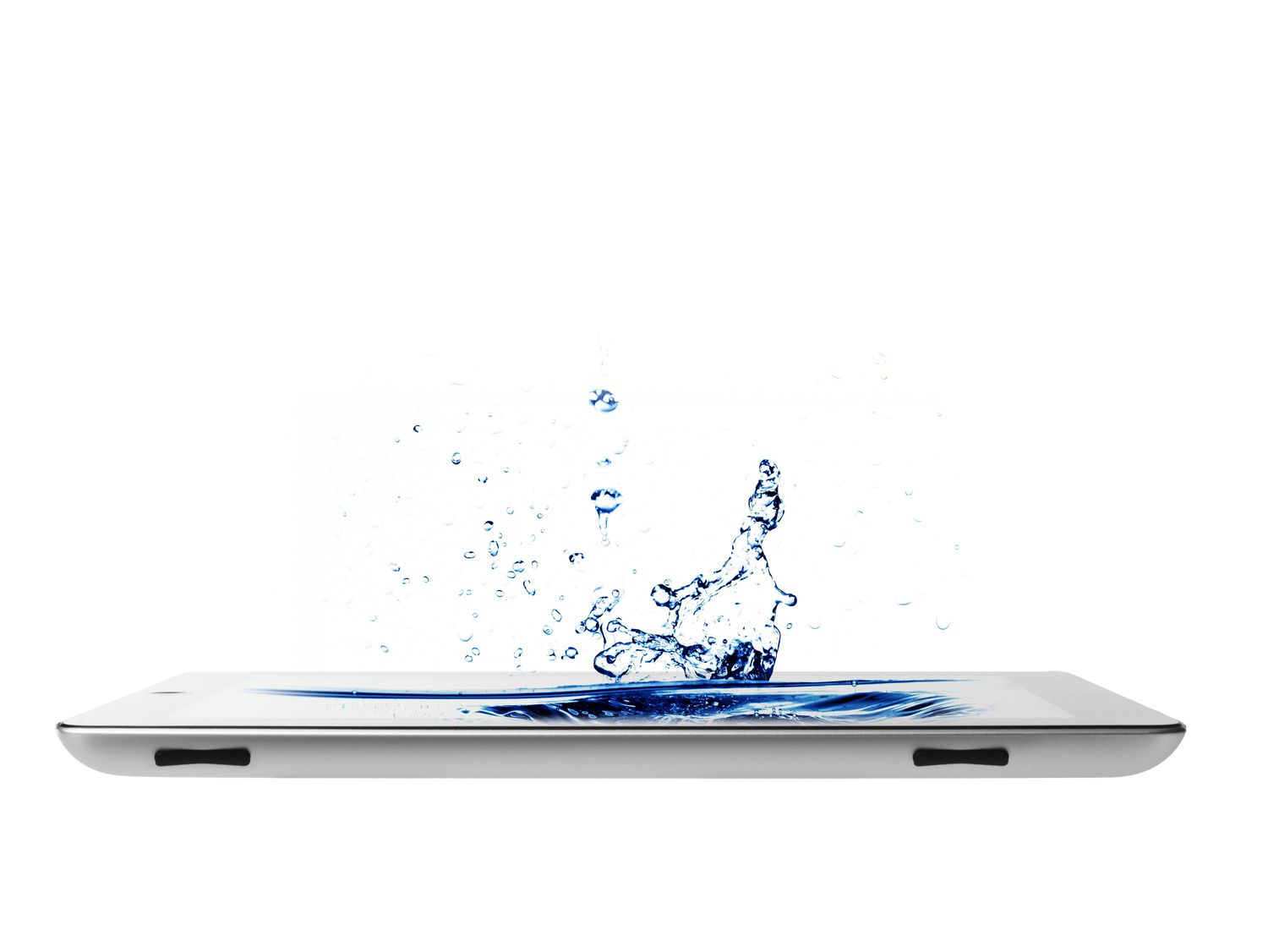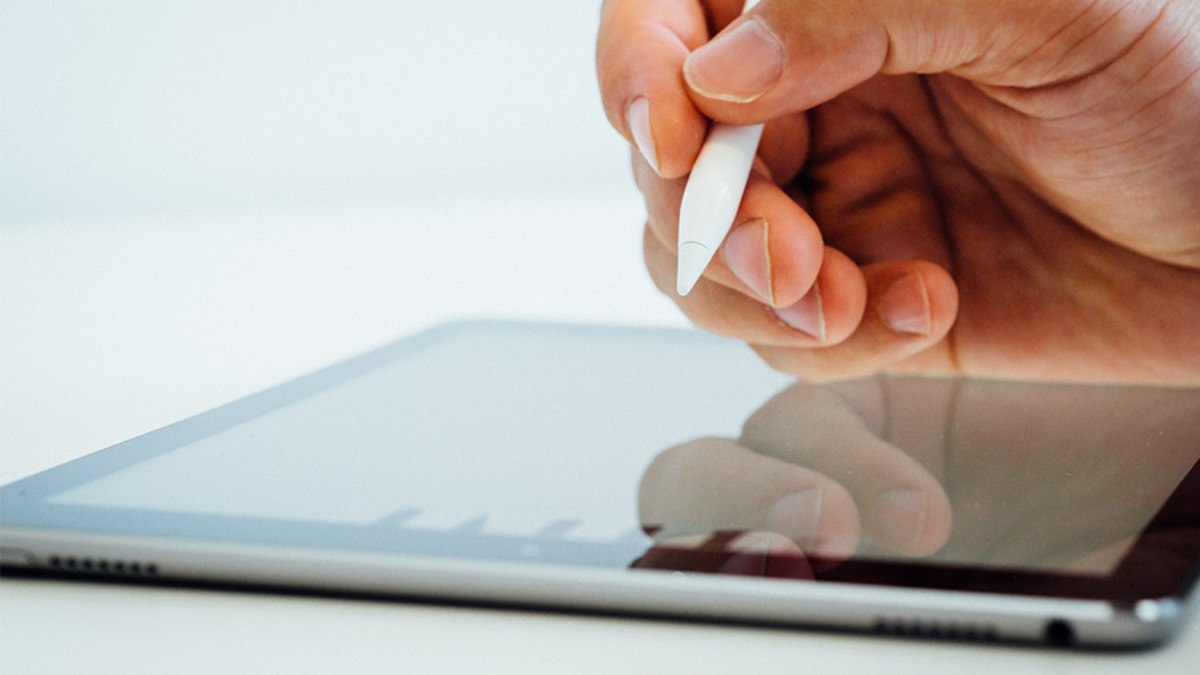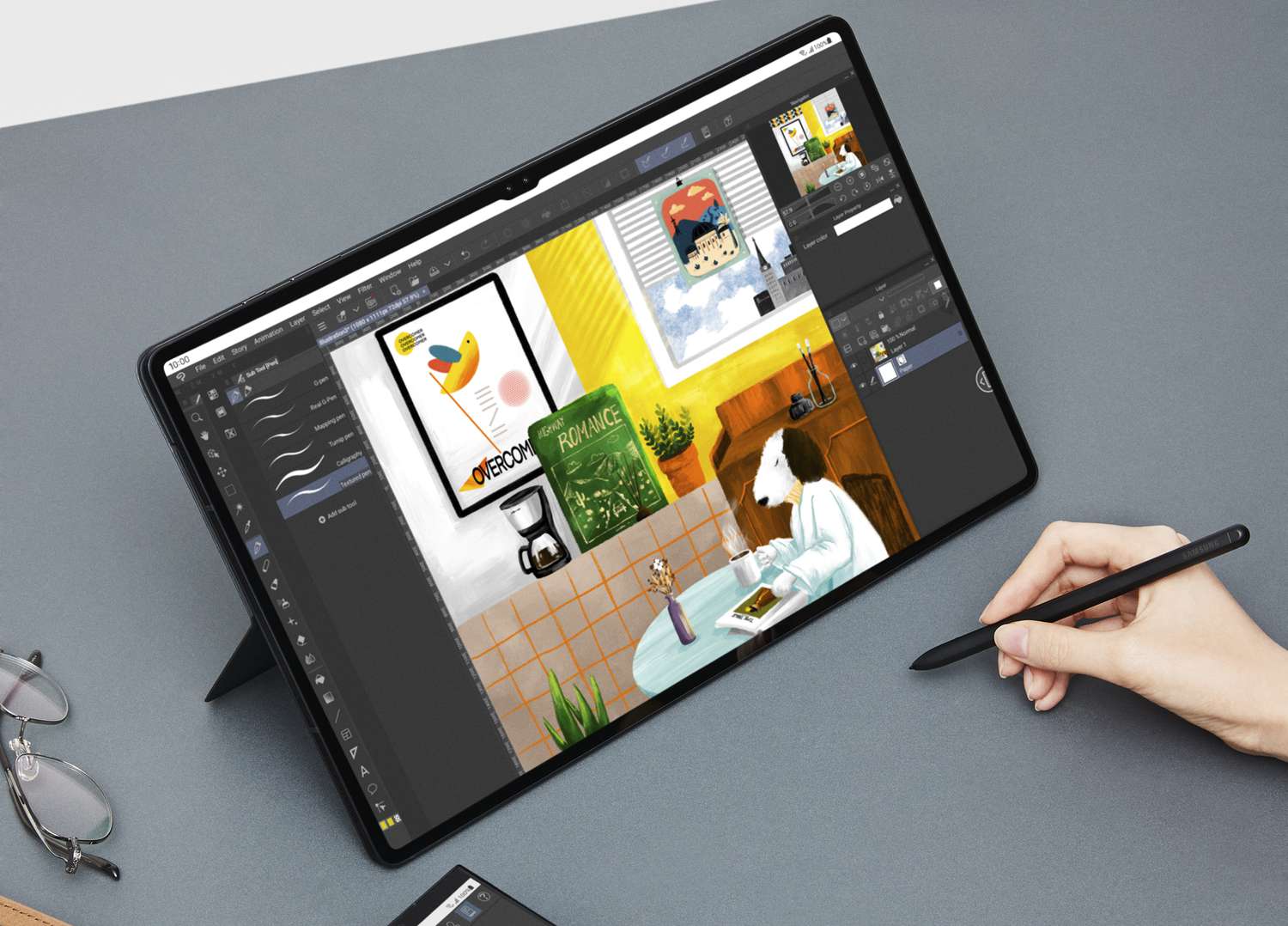Introduction
Welcome to our comprehensive guide on how to clean a tablet! Tablets have become an integral part of our daily lives, serving as multi-functional devices for communication, entertainment, and productivity. With frequent use, it’s inevitable that tablets accumulate dirt, smudges, and fingerprints, which not only diminish their visual appeal but can also affect their performance.
Proper cleaning and maintenance of your tablet are essential to keep it in optimal condition and prolong its lifespan. By following the steps outlined in this guide, you’ll be able to restore your tablet’s cleanliness and achieve that fresh-out-of-the-box look.
Before we dive into the specifics of tablet cleaning, it’s important to note that different tablets may have varying cleaning requirements. Always refer to the manufacturer’s instructions or guidelines specific to your tablet model. Additionally, it’s crucial to exercise caution while cleaning to avoid damaging sensitive components, such as the screen or ports.
In the following sections, we’ll discuss the supplies you’ll need to clean your tablet effectively and guide you through the step-by-step process of cleaning various parts of your tablet. From turning off the device to cleaning the screen, ports, buttons, and the tablet case itself, we’ll cover it all. So, let’s jump right in and get your tablet looking as good as new!
Supplies Needed
Before you begin cleaning your tablet, gather the necessary supplies to ensure a thorough and safe cleaning process. Here’s a list of essential supplies you’ll need:
- Microfiber cloth: A microfiber cloth is a must-have for cleaning tablets as it effectively lifts dirt and debris without scratching the screen. Avoid using rough or abrasive materials like paper towels or tissues, as they can cause damage.
- Screen cleaning solution: If your tablet has stubborn smudges or fingerprints, you may need to use a specialized screen cleaning solution. Ensure that the solution is specifically designed for electronic screens and doesn’t contain harsh chemicals like ammonia or alcohol, which can damage the screen.
- Soft-bristled brush: A soft-bristled brush, such as a clean makeup brush or a small paintbrush, can be useful for cleaning hard-to-reach areas such as ports, buttons, and crevices.
- Cotton swabs: Cotton swabs are handy for cleaning small gaps, ports, or buttons where dirt may be lodged.
- Compressed air canister: If you have access to a compressed air canister, it can be used to blow away dust and debris from hard-to-reach areas. Avoid using compressed air from sources like air compressors, as they may contain moisture.
- Clean, lint-free cloth: Keep a clean and lint-free cloth handy for wiping down the tablet case or removing excess moisture after cleaning.
Gathering these supplies in advance will ensure a smooth and efficient cleaning process without the risk of damaging your tablet. Now that you have everything you need, let’s proceed to the next steps in cleaning your tablet.
Turn Off the Tablet
Before you begin cleaning your tablet, it’s essential to turn it off. This will not only prevent accidental touches or input during the cleaning process but also reduce the risk of damaging the device.
Turning off the tablet ensures that the screen is not active, making it easier to see dirt or smudges and clean them effectively. Additionally, it helps prevent any potential damage to the internal components and reduces the risk of electrical shock.
To turn off your tablet, locate the power button, usually located on the top or side of the device. Press and hold the power button until the power options appear on the screen. From there, select the option to power off the device.
Once the tablet is completely powered off, proceed to the next steps in the cleaning process. It’s important to note that you should never attempt to clean a tablet while it’s still powered on or charging, as this can lead to accidents or damage to the device.
By turning off your tablet before cleaning, you ensure a safe and efficient cleaning process. Now that your device is powered off, let’s move on to the next steps in cleaning your tablet.
Use a Microfiber Cloth
When it comes to cleaning the screen of your tablet, using a microfiber cloth is key. Microfiber cloths are soft, lint-free, and highly effective in removing smudges, fingerprints, and dust particles from the screen.
Start by folding the microfiber cloth into a small, manageable size. Avoid using excessive force while cleaning, as it can damage the screen. Gently wipe the screen in a circular motion, applying light pressure to remove any visible smudges or fingerprints.
If there are stubborn stains or marks on the screen, slightly dampen the microfiber cloth with water or a specialized screen cleaning solution. Ensure that the cloth is only slightly damp and not dripping wet, as excess moisture can damage the electronics of the tablet.
Avoid using harsh cleaning chemicals or abrasive materials on the screen, as they can cause scratching or damage. Stick to using the microfiber cloth and gentle cleaning solutions designed specifically for electronic screens.
In addition to cleaning the screen, use the microfiber cloth to wipe down the back and sides of your tablet. This will help remove any dirt or fingerprints that may have accumulated on these surfaces.
Remember to be thorough but gentle when cleaning the screen of your tablet. Avoid pressing too hard, as excessive pressure can damage the screen or the delicate touch-sensitive components. Take your time to ensure that all areas of the screen are properly cleaned.
Using a microfiber cloth is an effective and safe way to clean the screen of your tablet. Now that you’ve mastered the art of using a microfiber cloth, let’s move on to the next steps in the cleaning process.
Be Gentle with the Screen
When cleaning the screen of your tablet, it’s crucial to handle it with care. The screen is one of the most delicate and sensitive parts of your device, and applying excessive pressure or using harsh cleaning methods can result in irreversible damage.
First and foremost, avoid using sharp or abrasive objects to clean the screen. This includes materials like paper towels, tissues, or even your fingernails. These can scratch the screen, compromising its clarity and functionality.
Instead, stick to using a microfiber cloth, as mentioned in the previous step. The soft and gentle fibers of the cloth will effectively remove dirt, smudges, and fingerprints without causing any harm.
When wiping the screen, use gentle and circular motions. Apply light pressure to avoid pressing too hard on the screen. Remember that modern tablet screens are designed to be sensitive to touch, so even gentle pressure will register on the device.
If there are stubborn stains or marks that won’t come off with a dry microfiber cloth, you can dampen the cloth slightly with water or a specialized screen cleaning solution. However, never spray liquid directly onto the screen, as it can seep into the device and cause damage. Instead, moisten the cloth and then gently wipe the screen.
In addition to being gentle with your cleaning motions, it’s important to avoid exposing the screen to extreme temperatures. Avoid cleaning the screen immediately after using the tablet, as the heat generated during usage can make the screen more sensitive to cleaning agents and potential damage.
By treating the screen of your tablet with care, you’ll not only maintain its visual clarity but also extend its lifespan. Take your time, be gentle, and exercise caution when cleaning the screen, and you’ll enjoy a pristine and functional tablet for years to come.
Avoid Using Chemicals
When it comes to cleaning your tablet, it’s important to steer clear of harsh chemicals. While certain cleaning agents may be effective at removing dirt and grime, they can cause significant damage to the delicate components of your device.
Avoid using household cleaners, window sprays, or any other solvents that contain alcohol, ammonia, or abrasive ingredients. These chemicals can corrode the screen’s protective coating, degrade the touch sensitivity, and even cause discoloration or permanent damage.
Instead, opt for specialized screen cleaning solutions that are specifically formulated for electronic devices. These solutions are designed to be gentle on screens and are typically alcohol-free, ensuring safe and effective cleaning without any risk of damage.
If you don’t have access to a specialized solution, you can use water as a gentle alternative. Dampen a microfiber cloth with distilled water and wring out any excess moisture. Ensure that the cloth is only slightly damp and not dripping wet to prevent any liquid from seeping into the device.
When using water or a specialized solution, it’s crucial to apply it to the microfiber cloth and not directly to the screen. Spraying liquid directly onto the screen can cause moisture to seep into the device, causing damage to the internal components or affecting its functionality.
Remember to always follow the manufacturer’s instructions and guidelines specific to your tablet model when it comes to cleaning and using any cleaning solutions. Be cautious and avoid anything that could compromise the integrity and performance of your device.
By avoiding the use of harsh chemicals, you’ll effectively clean your tablet without risking any damage. Let’s proceed to the next steps in the cleaning process and ensure your tablet stays in pristine condition.
Clean the Ports and Buttons
When cleaning your tablet, it’s important not to overlook the ports and buttons. Over time, these areas can accumulate dust, lint, and debris, which can affect their functionality and overall performance. Cleaning these components will help ensure smooth operation and prevent any potential issues.
To clean the ports, such as the charging port and headphone jack, start by inspecting them for any visible dirt or debris. Gently blow into the ports or use a canister of compressed air to remove any loose particles. This will prevent them from getting lodged deeper into the port or causing connectivity problems.
For stubborn debris that doesn’t come out with air, use a soft-bristled brush, like a clean makeup brush or a small paintbrush. Gently sweep the brush in and around the port to dislodge and remove any remaining dirt. Be cautious not to apply excessive force or insert the brush too deeply, as this can damage the port.
Next, shift your attention to the buttons on your tablet. Wipe them down using a slightly damp microfiber cloth. Ensure the cloth is not excessively wet, as moisture can seep into the buttons and affect their function. Gently rub the cloth over each button, removing any dirt or smudges that may have accumulated.
For buttons that have gaps or crevices, use a cotton swab moistened with water to clean these hard-to-reach areas. Make sure the cotton swab is not dripping wet to prevent excess moisture from entering the device.
Take extra care when cleaning buttons that are part of the touch screen, as these are typically more sensitive. Avoid pressing too hard or using excessive moisture, as this can interfere with the touch sensitivity or even damage the screen.
Once you’ve cleaned the ports and buttons, take a moment to check for any stubborn dirt or debris that may still be present. If necessary, repeat the cleaning process or consult the manufacturer’s guidelines for further assistance.
By regularly cleaning the ports and buttons of your tablet, you’ll maintain their optimal functionality and ensure a seamless user experience. Now, let’s move on to the next steps in our cleaning guide.
Remove any Built-Up Dirt
Over time, tablets can accumulate built-up dirt, particularly in hard-to-reach areas. It’s essential to thoroughly remove this dirt to maintain the performance and functionality of your device. Let’s take a look at how you can effectively clean these hidden areas.
Start by examining your tablet for areas where dirt tends to accumulate, such as the edges, corners, and speaker grills. These areas are prone to collecting dust, lint, and other debris, which can impact the overall appearance and even affect the tablet’s performance.
To remove the built-up dirt, use a soft-bristled brush, such as a clean makeup brush or a small paintbrush. Gently brush along the edges and corners of the tablet, loosening any trapped dirt or debris. Be careful not to press too hard or use excessive force, as this can potentially scratch the device.
For speaker grills or other small openings, a canister of compressed air can be handy. Use short bursts of air to blow away any dust or particles that may have accumulated. The compressed air will dislodge the dirt, allowing it to be easily removed.
In case there are stubborn dirt particles that are difficult to dislodge, you can use a cotton swab slightly moistened with water to carefully clean these areas. Be cautious not to use excessive moisture or any cleaning agents, as this can potentially damage the device.
While cleaning, take a moment to inspect the tablet for any signs of damage or wear. If you notice any cracks, loose parts, or abnormalities, it’s recommended to seek professional assistance or contact the manufacturer for further guidance.
By removing any built-up dirt from your tablet, you’ll not only enhance its visual appeal but also ensure optimal functionality. Let’s continue to the next steps and explore how to clean the tablet case.
Clean the Tablet Case
Keeping your tablet case clean is just as important as cleaning the screen and other components. The case not only protects your tablet but also contributes to its overall aesthetic appeal. Here’s how you can effectively clean your tablet case:
Start by removing the tablet from its case. This will allow you to clean the case thoroughly without the risk of damaging the device. Check the manufacturer’s instructions if you’re unsure how to safely remove the tablet from the case.
Once the tablet is out of the case, use a clean, lint-free cloth to wipe away any dust or debris from the exterior of the case. Gently swipe the cloth over the surface, paying close attention to any textured or scuffed areas that may trap dirt.
If the case is made of a washable material, such as silicone or plastic, you can clean it with mild soap and water. Dilute a small amount of mild liquid soap in water and dip a cloth or sponge into the solution. Wring out any excess moisture and carefully wipe down the case, removing any dirt or stains. Avoid soaking the case or submerging it in water, as this can damage the case or affect its protective properties.
For cases made of leather or other delicate materials, use a slightly damp cloth to wipe away any smudges or surface dirt. Be cautious not to saturate the cloth with water, as this can damage the material. If there are stubborn stains or marks on the case, consult the manufacturer’s instructions or consider using a specialized leather cleaner or conditioner.
After cleaning, allow the tablet case to air dry completely before reinserting the tablet. Make sure the case is completely dry, as any residual moisture can damage the tablet or contribute to the growth of mold or mildew.
It’s worth noting that tablet cases are available in a variety of styles and materials, so it’s important to follow the manufacturer’s instructions or specific cleaning guidelines provided with your particular case.
By regularly cleaning your tablet case, you’ll not only maintain its appearance but also ensure that it continues to provide the necessary protection for your tablet. Now that your case is clean and dry, you’re one step closer to enjoying a refreshed and well-maintained tablet.
Let the Tablet Dry Completely
After cleaning your tablet and its components, it’s imperative to allow them to dry completely before turning the device back on or reassembling it. This step is crucial to prevent any potential damage caused by moisture.
Start by laying each cleaned component, such as the screen, ports, buttons, and tablet case, on a clean, dry surface. Ensure that they are placed in a well-ventilated area away from direct sunlight, heat sources, or excessive humidity.
If you used a slightly damp cloth or cleaning solution during the cleaning process, give the tablet and its components ample time to air dry. The drying time may vary depending on the amount of moisture used and the humidity levels in your environment.
Although you may be eager to reassemble and use your tablet, it’s essential to exercise patience to allow for complete drying. Rushing this step might result in residual moisture being trapped in the device, leading to potential damage or malfunctions.
If you’re in a hurry or want to speed up the drying process, you can gently pat the components with a clean, lint-free cloth to absorb any remaining moisture. Do not use heat sources such as hairdryers, as the excessive heat can cause harm to the tablet or its components.
Once you are confident that all components of the tablet are dry, you can reassemble the device and power it back on. Double-check that everything is securely in place and free from any debris or moisture before doing so.
By allowing your tablet and its components to dry completely, you minimize the risk of potential damage and ensure that your device remains in optimal working condition. Now that your tablet is dry and ready, you can enjoy using it with peace of mind.
Conclusion
Cleaning your tablet regularly is an essential part of maintaining its appearance, functionality, and longevity. With the step-by-step guide provided in this article, you now have the knowledge to effectively clean your tablet and its components.
Remember to gather the necessary supplies, such as a microfiber cloth, screen cleaning solution (if needed), soft-bristled brush, cotton swabs, compressed air canister (optional), and a clean, lint-free cloth. These tools will ensure a thorough and safe cleaning process.
When cleaning your tablet, be gentle with the screen to avoid scratching or damaging it. Avoid using harsh chemicals, opting instead for specialized screen cleaning solutions or gentle homemade alternatives like distilled water.
Don’t forget to clean the ports and buttons, removing any dirt or debris that may affect their functionality. Take care when cleaning the tablet case, following the appropriate cleaning method for the specific material of your case.
Lastly, allow all the cleaned components to dry completely before reassembling or powering on the tablet. This crucial step ensures that no residual moisture remains, reducing the risk of damage or malfunctions.
By following these cleaning guidelines regularly, you’ll not only keep your tablet looking clean and fresh but also maintain its performance and extend its lifespan. Proper cleaning and maintenance will ensure that your tablet continues to serve you well throughout its useful life.
So, go ahead and give your tablet the cleaning it deserves. Enjoy the benefits of a sparkling clean screen, well-functioning ports, and a revitalized tablet case. Happy cleaning!







